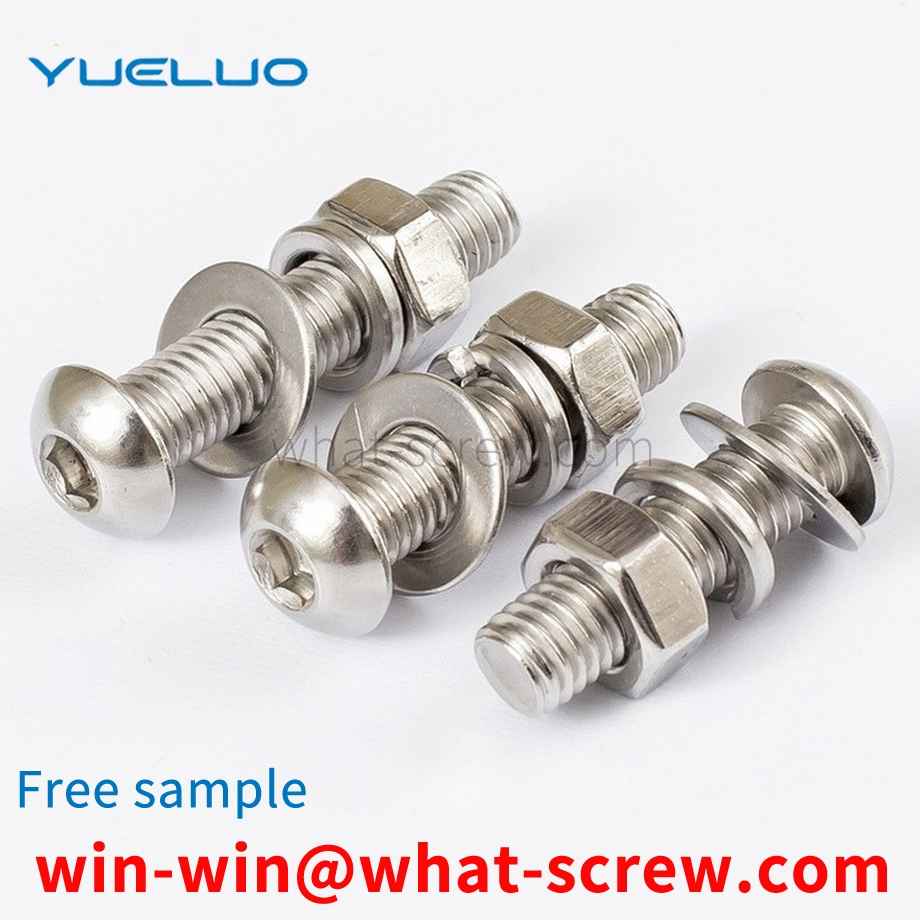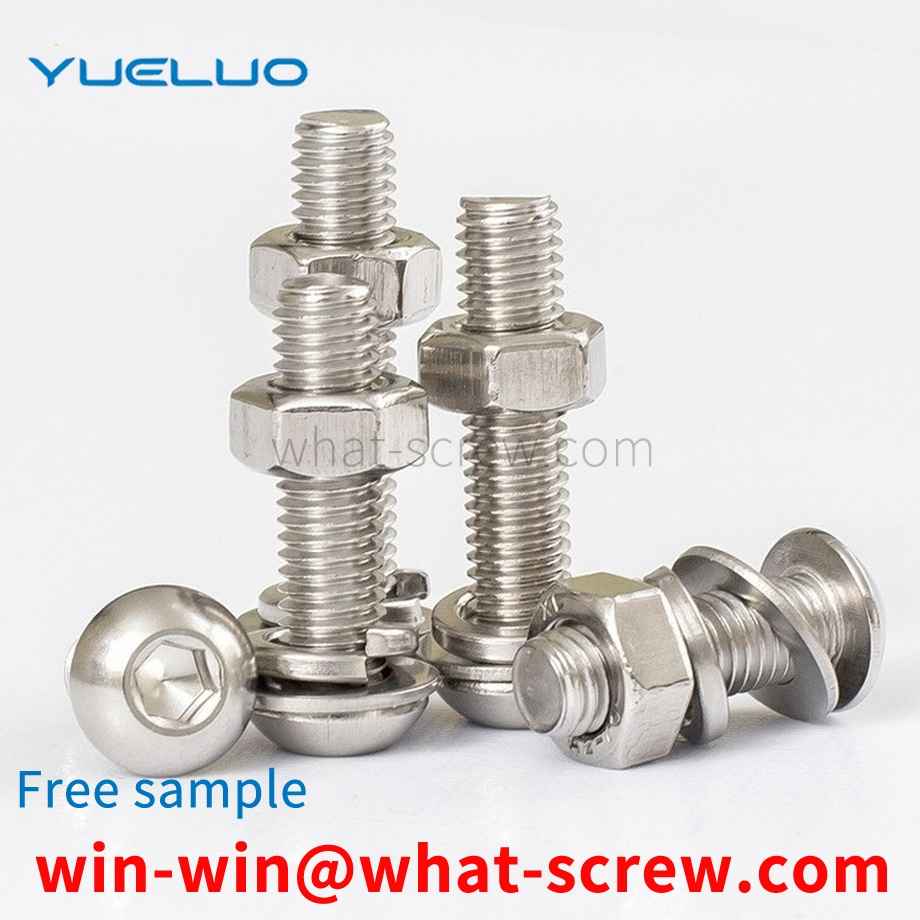When using screws, if you can understand the mechanical properties of screws first, then you can use screws better. Different types of screws have different mechanical properties, and the different mechanical properties lead to different occasions when screws are used. 1. Self-tapping screws: mechanical performance requirements 1. Heart hardness: standard value HRC28-38. When testing, take the section 1-2 times the diameter of the name from the tail. If the length of the name is too short, it can be embedded first, and then the hardness is measured. 2. Surface hardness: standard MIN HV450. 3. Carburized layer: standard 4#-6#: 0.05-0.18mm, 8#-12#: 0.10-0.23 mm, 14#: 0.13-0.28 mm. The main purpose of carburizing is to enhance the surface hardness and ensure the strength of the teeth. If the decarburization is too deep and the carburization is insufficient, the strength of the teeth will not meet the requirements, that is, the teeth will be damaged during the screw-in test. 4. Torque: standard specification 4#5#6#7#8#10#12#14#A tooth 14212835455696145AB tooth 142128354565102165. 5. Screw-in test: screw the self-tapping screw into a steel plate with a reserved test hole. The self-tapping screw should form a matching thread in the test plate, and the thread of the screw itself will not be deformed or damaged until the end. Tapered threads pass completely through the test plate. The screw-in test is only applicable to AB, B, BP and other types of self-tapping screws. It is stipulated in IFI that the test plate shall be prepared from semi-hard low-carbon cold-rolled steel, and the hardness of the steel plate is 70–85HRB in Rockwell. The standard specification of the steel plate, that is, the thickness, is shown in the table below. The test hole should be punched or drilled, and the tolerance is the specified nominal diameter (see the table below) ± 0.025mm. Specifications 6#7#8#10#12#1/4 Test plate thickness (mm) 1.85-1.953.12-3.234.68-4.84 Aperture (mm) ±0.0252.953.263.454.044.765.50.
The screw and nut disassembly and assembly tool of Yueluo also includes a rotating rod, a sleeve and a fixed rod fixedly connected to the sleeve rod at one end, and the other end of the fixed rod is connected with one end of the rotating rod to make the rotation The rod can be rotated around the connection point, and the sleeve for accommodating nuts or screws is fixedly connected with the other end of the rotating rod; rotating the rotating rod makes the sleeve head and the opening of the sleeve opposite , by keeping the nut or screw in the sleeve fixed while the corresponding screw or nut in the sleeve head rotates, so as to achieve simultaneous force and disassembly of the screw and the nut.
Basic requirements for the installation of T-bolt sleeve components: only when the T-head and the middle slot of the anchoring plate are in good agreement and the anchoring surfaces are in close contact, can the force be evenly applied. If the T-head and the anchoring plate are in line contact, even only point contact , the bolt is partially stressed, which will seriously affect the life. Therefore, the verticality of the sleeve installation must be less than or equal to 1/1000, that is, the horizontality of the anchoring plate surface must be less than or equal to 1/1000, and the center deviation of the sleeve must be controlled within 5mm (the center deviation of the T-bolt is 2mm). Therefore, improving the embedded accuracy of the T-bolt sleeve is the key to the installation of the T-bolt integral sleeve.
rivet is a nail-shaped object used to join two parts or components with a through hole and a cap on one end. In riveting, the riveted parts are connected by their own deformation or interference. There are many types of rivets, and they are informal. In today's product production, the slot holes on the same mounting surface often have different mounting slot depths. If a mechanical tool is used for quick screwing and installation, it will directly bring destructive effects to the brittle products, resulting in When the product is cracked and damaged, when connecting plastic shells, lightweight boards, insulating materials, circuit boards, or any other thin and light materials, the requirements for the installation process are also relatively high. The gripping force and bonding force of rivets are weaker than those of rivets that are screwed and installed by machinery. The bonding strength of rivets used in manual operations needs to be enhanced. The rivet structure needs to be improved and enhanced when installing thin, light-weight materials.
Spring washers are widely used in the load-bearing and non-load-bearing structures of general mechanical products. They are characterized by low cost and easy installation. They are suitable for parts with frequent assembly and disassembly. Quick and easy automatic selection of washers is included, but the anti-loosening ability of spring washers is very low! Especially in European and American countries that require high reliability, the adoption rate is extremely low, especially the important load-bearing structural connection parts have long been abandoned. Our country still has some applications in the military industry, but it has been improved to stainless steel. Steel spring washers have long been banned in CASC! It is also said to be very unsafe, because there are two reasons: 1 is circle rise and 2 is hydrogen embrittlement.
We have many years of experience in the production and sales of screws, nuts, flat washers, etc. The main products are: iron galvanized hexagon nuts, medium hexagon screws, connection model racks, hexagon socket flat cup round cup combination nuts and other products, we can provide you with The right fastener solution for you.



















 Service Hotline
Service Hotline




